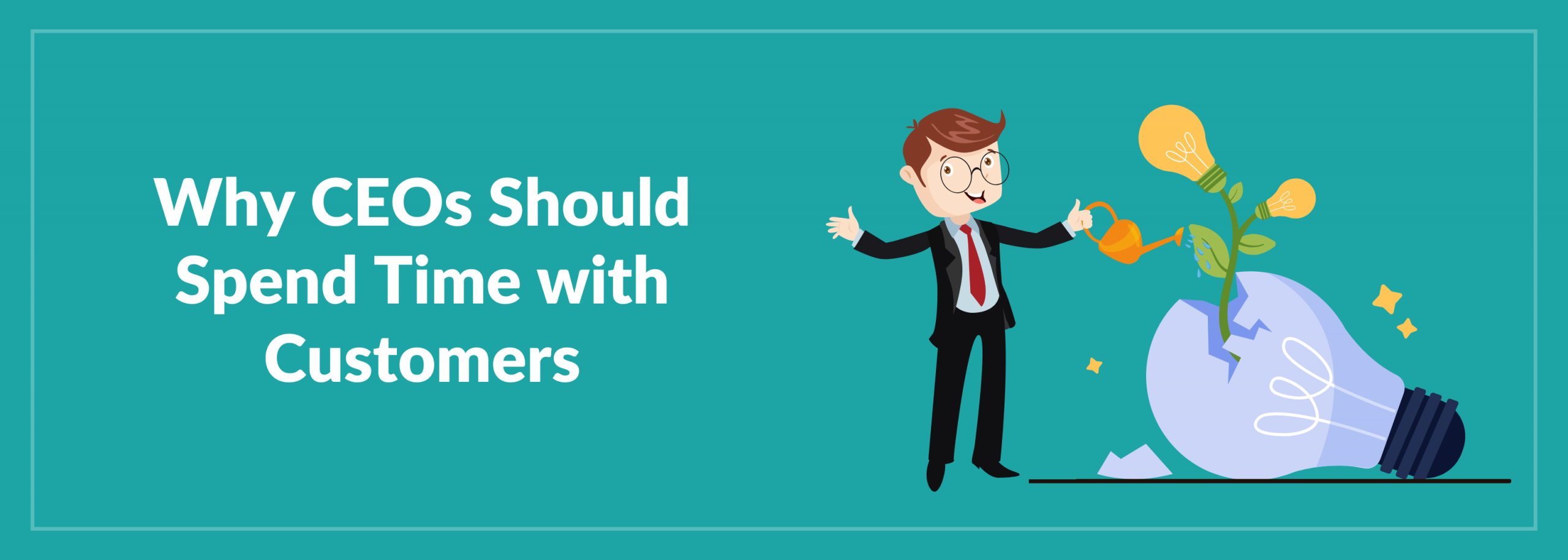What CEOs Can Learn from Spending Time with Customers?
- Why did you become my customer?
- Why do you continue to be my customer?
I am very fond of these two questions. In my opinion, these are two crucial questions that can make or break your organization.
If you figure out the answers to these and position yourself based on the reasons attributed by your customers, you will be in for the long haul.
This should be a continuous process.
How do you get your feedback?
Do you seek user feedback as a part of your quarterly surveys or annual NPS process?
Learn how businesses turn these insights into actionable strategies in our guide on collecting and acting on customer insights
Or do you speak to your users who actually use your products and services regularly and understand what’s working or what’s broken?
This is a lesson that was proven by leaders like Bill Gates and Zomato’s Deepinder Goyal, both of whom famously stepped onto the front lines to understand everyday customer struggles.
Let me explain this with an example.
I met with the CEO of a business intelligence (BI) service provider. He shared this anecdote with me.
They had a peculiar challenge when they were five years old. They were serving five customers at that point, and this number remained constant from the time they started the organization. Some of them would leave, and they add some of them. In essence, they had only five customers at any given time. They were just not growing.
So, they decided to reposition themselves. Their original positioning was based on their skill sets in BI tools and the level of experience they had within their organization in BI.
They relooked at their customers, and one of them had remained with them for all five years, while the others kept changing.
They asked that one customer who remained with them from the beginning this question:
Why are you still with us as a customer?
To which the customer responded, “Whatever we throw at you when it comes to business intelligence, you are able to deliver.”
They made this as their positioning statement, and they started winning more deals after that.
In this blog, I have attempted to explain why leaders shouldn’t only hear about issues but also experience them firsthand.
Specifically, we’ll look at how making user conversations a regular organizational habit can help your team design better experiences, catch hidden issues early, and build lasting trust with customers.
Read our blog on : 10 Ways of Building Rapport with Customers
Bill Gates at Phia
Bill Gates, despite being one of the world’s richest people, answered customer service calls for his daughter’s startup Phia. As covered by The Economic Times, Gates stepped in to help understand how the product functioned from the user’s side. He said, “The best way to understand how something works or where it breaks is to go straight to the people using it.”
That direct exposure revealed usability pain points, communication gaps, and internal assumptions that didn’t hold up in real conversations. Gates modeled leadership by showing that even at the highest levels, no one is too senior to learn from user feedback in person.
Deepinder Goyal at Zomato
When a former Zomato employee publicly criticized the platform’s declining customer support, calling it “nearly impossible” to connect with a human agent, CEO Deepinder Goyal responded personally on social media, offering to communicate directly with the user.
His gesture wasn’t a PR move; it was reality. By stepping off the executive stage and engaging in a genuine conversation, he underscored a human-first philosophy. Goyal’s action reignited a larger discussion about the alienation sometimes caused by excessive automation. Crucially, he also sent a message internally: leaders must see and feel what customers experience, and not just hear reports about them.
Read our blog on : 7 Customer Experience Wins That Drove Real Results
Why Should Customer Conversations Be a Routine Affair?
Do you, as a leader, treat user feedback as a checkbox?
You conduct annual surveys and quarterly reports, and let everything else pass.
That isn’t going to cut it, as you miss the nuance and the real opportunity hidden in user frustrations.
However, real conversations with your users can be very powerful.
- Unfiltered insights: Your sessions with customers can reveal issues that no data dashboard captures, such as tone, context, confusion, or minor frustrations that can escalate into churn.
- Empathy building: When product, sales, and support teams hear complaints firsthand, they internalize the customer’s pain and solve problems more effectively.
- Validation loops: Early-stage features and scripts can be tested with real users. These quick feedback cycles help you avoid wasted development time or internal bias.
- Leadership alignment: When senior leaders jump into user-facing roles, what does it do? It sends a cultural signal that listening to users matters more than vanity metrics.
Bill Gates and Deepinder Goyal are notable examples, but they shouldn’t be seen as irregular PR stunts.
How about institutionalizing this approach?
You can do this regularly by rotating leadership in CX calls. This fosters a culture where user conversations are integrated into product sprints, roadmaps, and training, rather than being kept behind closed doors.
Read our blog on : Why Customer Problems Have Hit a Record High
What Bill Gates and Deepinder Goyal modelled is exactly what your organization can make routine.
Listening to users isn’t about fixing bugs or resolving complaints. It’s how organizations truly understand what customers value, what frustrates them, and where innovation is needed.
When you embed user dialogue into leadership workflows, product testing, and support operations, you gain valuable insights, establish trust, and achieve a sustainable competitive edge.
Start small by scheduling user-facing hours, joining support calls, or walking through a user journey yourself.
Lead with the objective of understanding the humans you serve.
